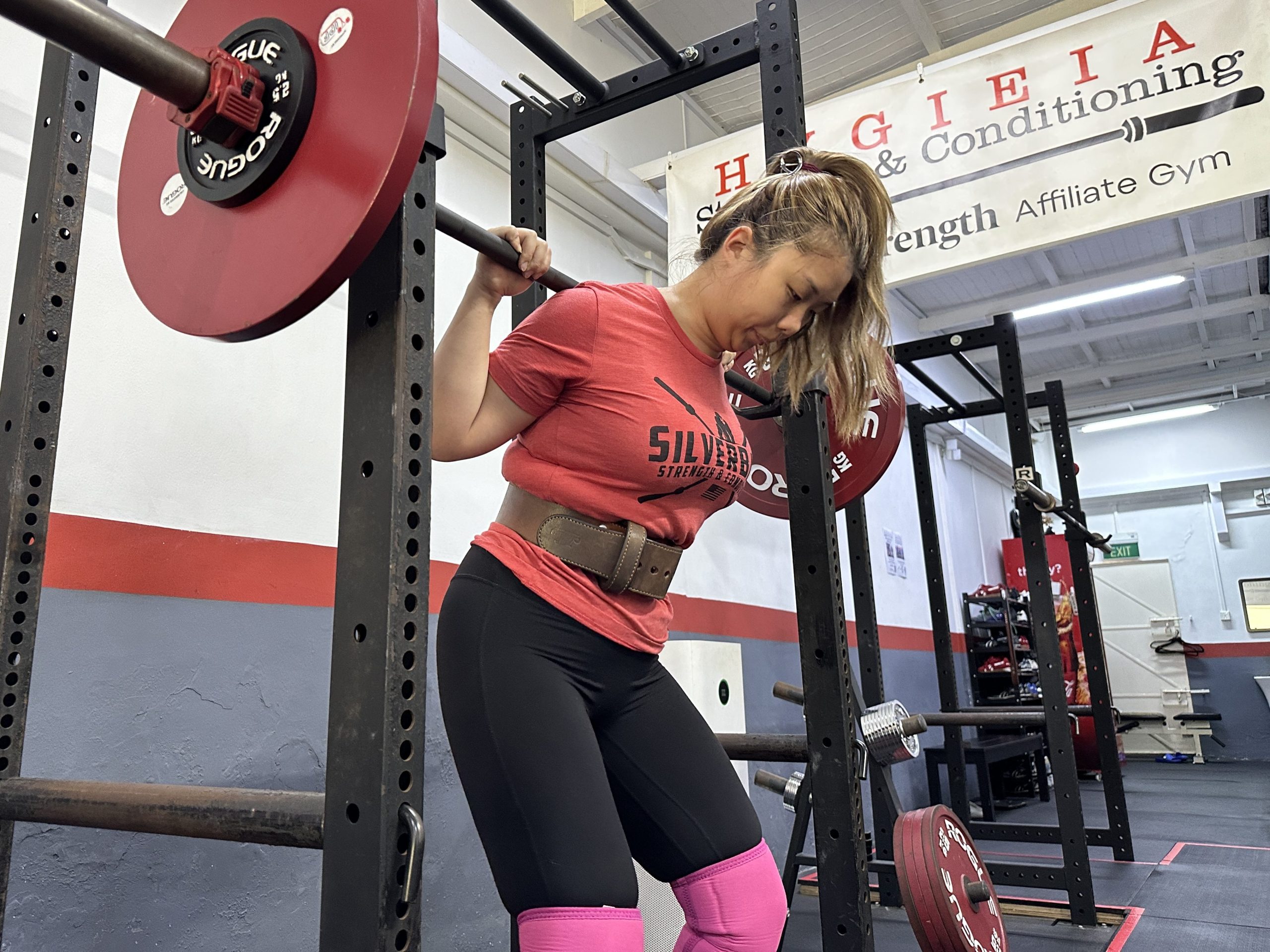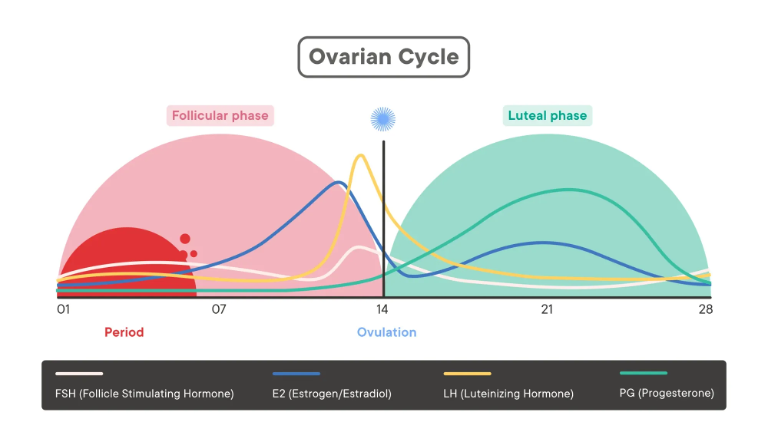
You glance at your training log and think, “Great, heavy squats today, along with three sets of deadlifts.” You clutch your bloated belly. “Why are my leggings tighter than usual? Did I gain weight overnight?” you wonder, dragging your feet to the gym, one unmotivated step after another.
A calendar app reminder dings—it’s Aunt Agony. She’s due tomorrow for her monthly visit. No wonder you feel this way. “I’m feeling so weak that I might fail my squats today. Maybe I should talk to my coach?” You search the internet for advice on exercising during menstruation, and you’re bombarded with online tips, each more complicated than the next:
“Avoid intensive exercise on heavy bleed days due to an inflammatory response ”
“Hit that PR at the tail end of your period”
“Ride the hormone wave! Do more reps and sets during the follicular phase”
“Take it easy—only light cardio during the luteal phase”
“Lift heavy right before ovulation to maximise anabolic gains”
And the cherry on top,
“Don’t train heavy while ovulating due to an increased risk of ACL tear”
The discomfort is manageable for now, but with all these time-sensitive do’s and don’ts, you’re starting to second-guess your workout today. What’s a woman like you supposed to do?
Menstrual cycles and the effects of its fluctuations can cause symptoms that can either greatly affect your performance at the worst of times, or sometimes not at all. No wonder us girls get so frustrated. While this article is aimed at the ladies, I implore the gentlemen to stick around, as this article will be insightful for you too!
The Phases
Normal menstrual cycles can be as short as 21 days and as long as 38 days. A full cycle consists of two phases, Follicular and Luteal, that are dictated by two events, Menstruation and Ovulation, which are influenced by hormonal changes. In this brief description, we will use the commonly used average of 28 days.

First 14 Days: Menstruation and Follicular Phase
Follicular phase starts on day one with menstruation, which is the shedding of the uterus lining in the absence of pregnancy. This shedding period usually lasts from 2 to 7 days. The follicle (or egg) matures throughout this phase in preparation for ovulation that occurs about 14 days after the first day.
Estrogen (EH), Progesterone (PH), and Luteinizing Hormone (LH) levels are at its lowest during the early follicular phase. EH increases to stimulate follicular growth, slowly peaking towards the end of follicular phase, which signals for a sharp increase in LH to trigger ovulation as the mature egg is released. EH and LH levels peak at ovulation. PH remains low.
Next 14 Days: Ovulation and Luteal Phase
Luteal phase starts from day one of ovulation. The uterus lining thickens as it prepares for fertilisation.
EH and LH levels drop off significantly after ovulation, and PH steadily increases through the Luteal phase, peaking about day 21-23 and dropping low towards the 28th day. An inflammatory response is triggered, and another menstruation starts the next cycle.
Hormonal Fluctuations
Hormonal changes act as messengers that tell the reproductive organ what to do in preparation for the next event in the cycle, and it is important to recognise that different women react to these changes differently. As studies state: the follicular phase should bring more chances of hitting PRs, while the luteal phase could worsen pre-menstrual symptoms and make training particularly challenging. But are these statement true for everyone, is it just the studies telling you how you should be feeling according to science?
Even with my own training experience during debilitatingly painful periods, and as a coach who has worked with women facing similar challenges while lifting, I would be remiss to make any blanket yes-or-no statements. The reality is that some women breeze through their training with little to no symptoms during their periods, others can handle discomfort and still train relatively heavily, while some simply can’t get out of bed on their worst days.
Physiological effects like bloating, lower back soreness, fatigue, weakness, migraines, cramps, tenderness in erogenous parts of the body, are some examples of physical symptoms that commonly occur during the end of the luteal phase and through period. On top of the physical symptoms, some of us do turn into Debbie Downer and lose all motivation to even leave the house, let alone go to the gym.
Go With The Flow – Literally
After training for a few months, you’re likely to experience days when heavy training coincides with heavy flow. These are prime opportunities to track the symptoms that affect your performance. Are there specific days that feel especially challenging? Any warning signs that come before them? Is there consistency in the volume of your flow? Can you feel the soreness building up like the calm before a storm?
Once you’ve identified these patterns, they can provide valuable insight for you and your coach to adjust your training based on your menstrual cycle. If you’re planning to compete in a powerlifting event, a local meet, or just want to hit all your heavy reps consistently, understanding how your body reacts during these phases will help you prepare for any scenario. Can’t fight the wave? You might as well ride it to your advantage. Speak to your coach about practicing some heavy singles during the tougher days.
Whatever you and your coach may consider when making program adjustments, skipping training should never be an option. Performance on the first day of your period may not match last week’s best, but remember that training is about physical adaptation driven by mental resilience. When the discomfort is manageable, training shouldn’t stop. Intensity can always be adjusted to provide enough stress to keep the training process going
Managing Symptoms is a bit like Mise en Place
Some women have found that steeling the body for the next cycle—almost like preparing mise en place for a good stew—can help reduce or alleviate some symptoms. Personally, my ‘ingredients’ include a diet rich in iron and protein, consistent sleep, and an awareness of my overall stress levels and mood. Sound familiar? These are the similar principles we often recommend for progress under the bar. This approach has worked for me, but on the months that don’t go as smoothly, a couple of ibuprofen pills can go a long way in fixing my stew.
Final Thoughts
Understanding your unique menstrual patterns while training through a cycle can help you make more informed decisions throughout your lifting career. Once you start taking control of your physical and mental well-being during the phases, your confidence in your performance should naturally increase. Involve your coach in tracking your peaks and troughs, consult a trusted doctor to address medical concerns, and roll out your own red carpet as you train hard through your next period.
References:
“How to Optimize Training Around Your Menstrual Cycle.” Bodybuilding.com, 26 Sept. 2019, https://www.bodybuilding.com/content/how-to-optimize-training-around-your-menstrual-cycle.html
Schoenfeld, Brad J., and Alan A. Aragon. “Effects of Menstrual Phase on Resistance Exercise Performance: A Systematic Review.” PubMed, https://pubmed.ncbi.nlm.nih.gov/31490339/
“Follicular Phase.” Elara Care, https://elara.care/hormones/follicular-phase/
“Exercise & Nutrition Scientist: The Truth About Exercise On Your Period! Take these 4 Supplements!” Youtube, uploaded by stevenbartlett, 6 Jan. 2025, https://youtube.com/watch?v=It5_C6AF1pk&si=rJ4-9fvSdoMvaGEA

